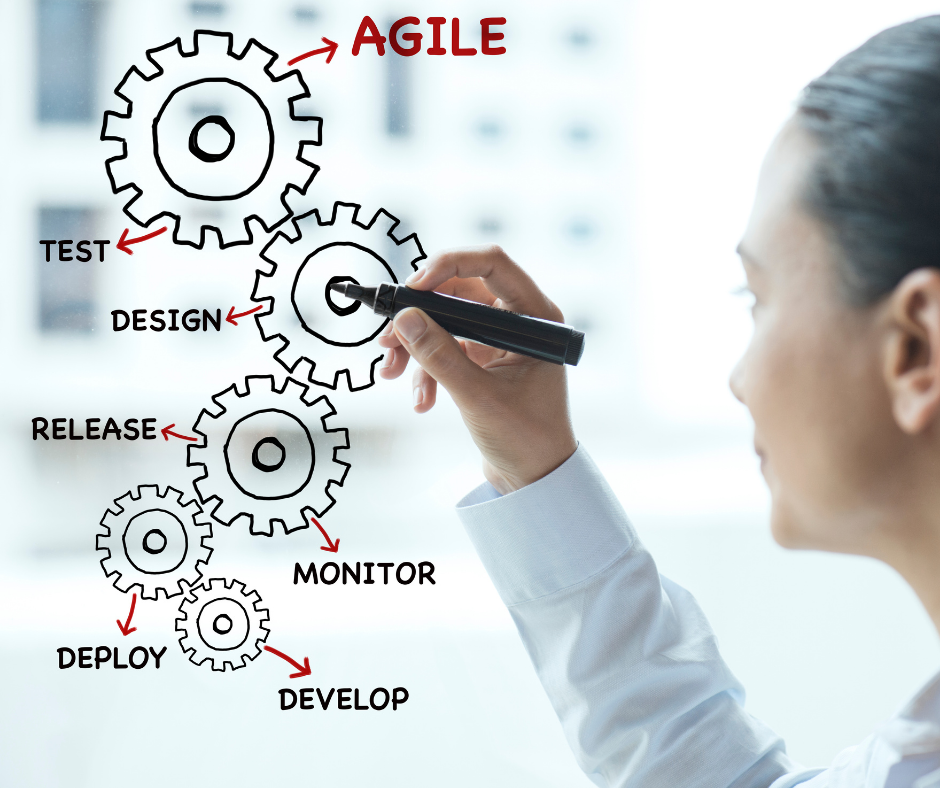Posted by Data Stems ● Oct 16, 2020 10:45:00 AM
Waterfall vs Agile vs Devops
In industries that are highly reliant on technology, change is constant. That is even more true with the impact of the Covid-19 pandemic at the start of 2020, as organizations transform operations. The introduction of fast-paced digital channels requires teams to be more flexible with their management and development strategies.

This post discusses how traditional development practices are losing out to innovative approaches that are more adaptable to the modern ecosystem. We will look at three methodologies; waterfall, agile, and dev ops.
The Waterfall Model
Anyone working in more established businesses and industries will be familiar with the waterfall technique for project management and software development. The methodology uses a linear approach, starting at phase one and only move to the next stage when everything is complete. Requirements for a project must all be known up front, with documentation and analysis and a process map. Implementation will only commence if that is all in place.
Many projects are successful with the waterfall model as the planning phase is meticulous, leaving little room for error. However, problems arise if, during a project, there is a need for flexibility and adaptation. Waterfall strategies do not allow deviation from the guidelines and can be restrictive when constant feedback and iteration are essential.
For example, artificial intelligence (AI) projects need experimentation before deployment. However, the potential results of AI tasks can be unknown, as algorithms teach themselves independently. On that basis, building a full specification before beginning a project is almost impossible.
The need for dexterity sees traditional waterfall structures transform into an agile methodology.
Agile Development
A report from the Standish Group Chaos Study shows that agile principles have a significantly higher success rate than traditional waterfall projects. In his LinkedIn post, Dr Jochen Malinowksi talks about how we have not been stupid in the past using waterfall, but we just now got intelligent by moving to agile.
Unlike the waterfall model, an agile project uses continuous iterative sprints that support change more than a defined process. Teams prefer to deliver releases faster using an agile strategy, while they can get immediate feedback rather than waiting for project completion.
Let’s say a project lasts for five years. With a waterfall methodology, there is a need to specify the full development scope at day one. However, a lot can change over five years, and the requirements can become obsolete. An agility methodology mitigates the problem by allowing constant adaptation.
Agile relies on collaboration as a resource for all areas is needed throughout the project, rather than just defining the initial requirements. Planning, design, development, testing, implementation, and feedback work in a loop using phases called “sprints.” A sprint usually lasts weeks and will have a list of deliverables. Sprints can always change in line with business priorities.

However, agile projects are more challenging to run than traditional, structured waterfall developments. As requirements keep changing, IT teams can struggle to keep up, creating internal conflicts where this isn’t formal planning. Also, the final product might be vastly different from the original concept, where it continually evolves. Industries like construction and manufacturing still rely more on waterfall methodologies to avoid those problems.
DevOps
DevOps takes its name from an amalgamation of development and operations. The idea is that it takes all the best bits from agile techniques and adding to them.
Whereas agile is an iterative approach focusing on collaboration, DevOps brings the development and operational teams together. The core objective is a constant testing of solutions, rather than continuous changes. In a DevOps project, skill sets are spread between development and operations, meaning larger teams are needed than agile or waterfall frameworks.
Automation is the foremost goal of DevOps to maximize efficiencies when deploying software. Although automation augments agile projects, it isn’t necessarily emphasized.

In a DevOps environment, delivery can be continuous. There are no sprints, but the potential for daily releases through automation. The model is very much customer-centric to offer the best possible experience across fast-moving channels.
You can learn more about getting started DevOps using this guide from Guru 99.
Topics: DevOps, Agile Method, project management
